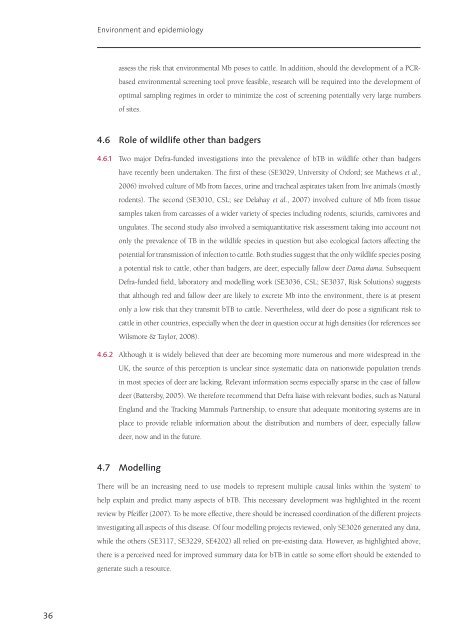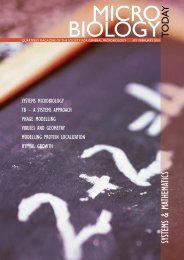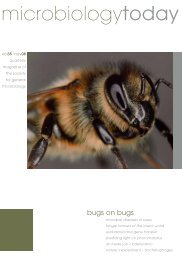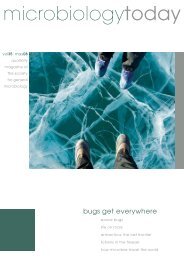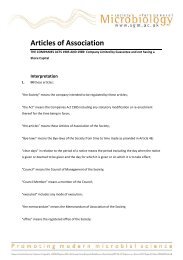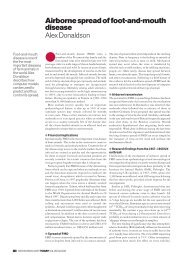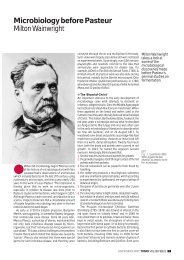final report - ARCHIVE: Defra
final report - ARCHIVE: Defra
final report - ARCHIVE: Defra
Create successful ePaper yourself
Turn your PDF publications into a flip-book with our unique Google optimized e-Paper software.
Environment and epidemiology<br />
assess the risk that environmental Mb poses to cattle. In addition, should the development of a PCRbased<br />
environmental screening tool prove feasible, research will be required into the development of<br />
optimal sampling regimes in order to minimize the cost of screening potentially very large numbers<br />
of sites.<br />
4.6 Role of wildlife other than badgers<br />
4.6.1 Two major <strong>Defra</strong>-funded investigations into the prevalence of bTB in wildlife other than badgers<br />
have recently been undertaken. The first of these (SE3029, University of Oxford; see Mathews et al.,<br />
2006) involved culture of Mb from faeces, urine and tracheal aspirates taken from live animals (mostly<br />
rodents). The second (SE3010, CSL; see Delahay et al., 2007) involved culture of Mb from tissue<br />
samples taken from carcasses of a wider variety of species including rodents, sciurids, carnivores and<br />
ungulates. The second study also involved a semiquantitative risk assessment taking into account not<br />
only the prevalence of TB in the wildlife species in question but also ecological factors affecting the<br />
potential for transmission of infection to cattle. Both studies suggest that the only wildlife species posing<br />
a potential risk to cattle, other than badgers, are deer, especially fallow deer Dama dama. Subsequent<br />
<strong>Defra</strong>-funded field, laboratory and modelling work (SE3036, CSL; SE3037, Risk Solutions) suggests<br />
that although red and fallow deer are likely to excrete Mb into the environment, there is at present<br />
only a low risk that they transmit bTB to cattle. Nevertheless, wild deer do pose a significant risk to<br />
cattle in other countries, especially when the deer in question occur at high densities (for references see<br />
Wilsmore & Taylor, 2008).<br />
4.6.2 Although it is widely believed that deer are becoming more numerous and more widespread in the<br />
UK, the source of this perception is unclear since systematic data on nationwide population trends<br />
in most species of deer are lacking. Relevant information seems especially sparse in the case of fallow<br />
deer (Battersby, 2005). We therefore recommend that <strong>Defra</strong> liaise with relevant bodies, such as Natural<br />
England and the Tracking Mammals Partnership, to ensure that adequate monitoring systems are in<br />
place to provide reliable information about the distribution and numbers of deer, especially fallow<br />
deer, now and in the future.<br />
4.7 Modelling<br />
There will be an increasing need to use models to represent multiple causal links within the ‘system’ to<br />
help explain and predict many aspects of bTB. This necessary development was highlighted in the recent<br />
review by Pfeiffer (2007). To be more effective, there should be increased coordination of the different projects<br />
investigating all aspects of this disease. Of four modelling projects reviewed, only SE3026 generated any data,<br />
while the others (SE3117, SE3229, SE4202) all relied on pre-existing data. However, as highlighted above,<br />
there is a perceived need for improved summary data for bTB in cattle so some effort should be extended to<br />
generate such a resource.<br />
36


